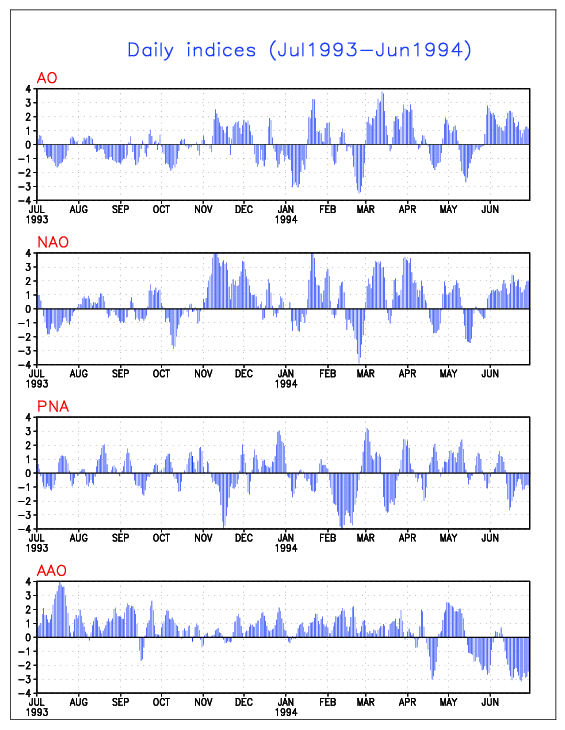wxguy25 wrote:Jeb wrote:wxguy25 wrote:Jeb wrote:That is an excellent discussion of CSI banding, wxguy25. That is, by far, some of your best work!
I'll be back in a while with a few clarifying questions.
-Jeb
Actually it’s quite a rudimentary description. I could get alot more in depth and mathematical with it, but that wouldn’t be beneficial to anyone just wanting to learn the basics about it. besides, I would probably end up raising more questions than providing answers to the ones already being asked.
Conditional Symmetric Instability
I need to know everything about CSI!!!!
I would like you (wxguy25, or anyone else who cares to) to go into MUCH, MUCH more detail about several things you mentioned earlier........
Please go into MUCH GREATER DETAIL!
1) What is a Mesoscale process?
2) What is the difference between a mesoscale process and a synoptic process?
3) What does synoptic mean?
4) What is moist symmetric instability?
5) What are other forms of moist symmetrical instability besides CSI?
6) What is two dimensional, quasi-symmetric banding?
7) Please, if you would, please try to explain the following paragraph in more detail. I apologize for not having more of an understanding of these processes.The nature of the banding will be two dimensional /quasi-symmetric, the criteria needed for the development of the banding is met in the region where the bands are found and the bands align themselves parallel to the thicknesses field (thermal wind). Remember this is b/c thermal wind flows parallel to the thickness gradient. Bands move at the same speed the flow is moving which means the bands themselves have a propagation of zero.
8) What are ducted gravity waves?
9) What is Kelvin-Helmholtz instability?
10) What are the different types of instability?
11) In the following quoted region below, I would like it if you would explain each bolded word or phrase in much more detail.PSI / POTENTIAL Symmetric Instability:
Theta-e (Equivalent Potential Temperature) decreases w/ height along the geostrophic Momentum Surface (hereafter, Mg). This is known as the Mg-theta-e relationship which is needed for slantwise convection.
MPVg (Moist geostrophic potential Vorticity (or EPV / Equivalent potential Vorticity) is less than zero.
A quick note. Whenever there is the Mg-Theta relationship, negative MPVg will be present. I PREFER and RECOMMEND that you use MPVg over the Mg-theta relationship since you don’t have to worry about the orientation of the cross section.
CSI /Conditional Symmetric Instability:
Theta-es decreases w/ height along the Mg Surfaces. Mg-Theta-es relationship. MPVg* (* = saturated, thus MPVg* implies Saturated Moist potential geostrophic vorticity)
SOME researchers over the years have questioned the validity of blindly using theta-e in assessing CSI instead of suing theta-es. You can since the two will be equivalent to one another at saturation; however I prefer to use theta-es.
CSI and frontogenesis will almost always be found together. Frontogenesis simply indicates baroclinicity or tightening of the thermal gradient over a distance. Thusly since frontogenesis characterizes a region where the horizontal thermal gradient is stronger, the Mg surfaces are more likely to become increasingly horizontal and the pseudo adiabats more vertical. This can also be achieved in situations where strong vertical speed shear exists.
Please understand that you certainly DO NOT have to do this.
I am not trying to prove anything, I have less than a kindergarten understanding of weather. My whole life is eminently laughable; all I really understand is how to get way too excited over snow events and beach jebwalking.
I am only trying to understand something that is, to my level of understanding, approximately 500 centuries in my future LOL.
It's easy for me to understand that I get super excited about snow, then go jebwalking and experience endorphins then compound that phenomenon by blasting inspirational Christian music in state of the art stereo headphones smack-dab in the middle of a snow-filled jebwalk.
Even though I am admittedly years behind in my meteorological understanding, I still LOVE these discussions to no end!!!!
-Jeb
What do you think I am, Jeb? A textbook? But you seem to be that Ambitious so i will give a reference to an EXCELLENT textbook expose on CSI By Dr. Howard Blustien
Bluestein, H. B., 1993: Synoptic-Dynamic Meteorology in Midlatitudes. Volume II: Observations and Theory of Weather Systems. Oxford University Press, section 3.5.2.
Thanks for the reference wxguy
 The posts in this forum are NOT official forecast and should not be used as such. They are just the opinion of the poster and may or may not be backed by sound meteorological data. They are NOT endorsed by any professional institution or
The posts in this forum are NOT official forecast and should not be used as such. They are just the opinion of the poster and may or may not be backed by sound meteorological data. They are NOT endorsed by any professional institution or 



